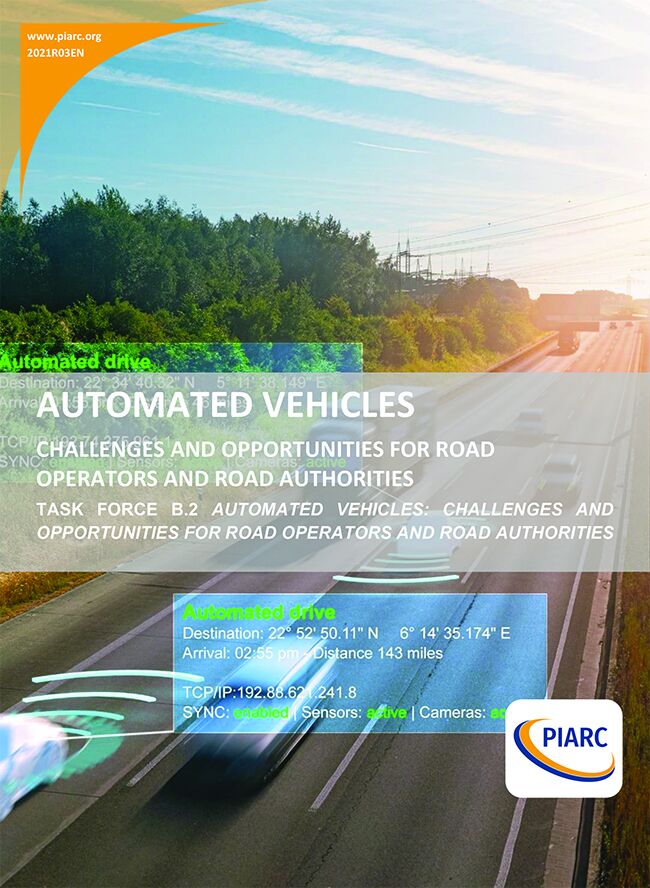Automated Vehicles - Challenges and Opportunities for Road Operators and Road Authorities - Technical Report

Vehicle Automation – at SAE levels 3, 4 and 5 – is still in a testing phase in most countries. Many tests at level 3 have been performed successfully on open roads without any changes to the road infrastructure and without any observed impacts on congestion. There are various situations which necessitate that a driver takes control of the vehicle – a fall-back solution that is still allowed at level 3, but not at level 4 or 5.
It is likely that some support from the infrastructure will be needed to reach higher levels of automation. In particular, well-maintained lane markings and the provision of landmarks appear to be key features. Automated vehicles cannot, however, rely solely on the physical infrastructure, due to practical limitations; lane markings deteriorate over time, and it is not practical to forecast when they become ineffective for automated operation. Therefore, digital infrastructure, including data provided through high-definition maps and/or through vehicle-to-infrastructure connectivity, is required. Initial insights on this digital infrastructure have been provided in this report.
Regarding the impact on congestion, two factors need to be considered. The first is the operational capacity of physical infrastructure. Some studies indicate that capacity is likely to decrease at low penetration rates and potentially improve only by 2050 or 2055 due to shorter headways. The second is the change in traffic demand. It has been predicted that within the next 20 years, 60% of the the world's population will live in cities. If vehicle use is increased without regulation due to increasing empty automated vehicle trips and changing parking availability, congestion could increase further. The promotion of automated shuttles could help address this risk.
Some studies also show that the impact on road safety should be positive at high penetration rates, as already observed due to greater penetration of Advanced Driver Assistance Systems (ADAS). This assumes that many human factors are considered, such as driver overreliance or loss of driving skills.
The report mentions 11 key challenges to tackle regarding social issues in order to make automation a success.
Finally, in terms of responsibility, a new balance will need to emerge between the responsibility of the road operator and the responsibility of car manufacturers (or even the car itself). This balance could be linked to a certain level of service, but the definition of this level is not yet mature.
Information sheet
- Date: 2021
- Author(s): Groupe d'études / Task Force / Grupo de Estudio B.2 Véhicules automatisés - Défis et opportunités pour les opérateurs et les autorités routières / Automated Vehicles – Challenges and Opportunities for Road Operators and Authorities / Vehículos automatizados: retos y oportunidades para los operadores y las
- Domain(s): Road Safety / Road Network Operations
- Type: Technical Report
- PIARC Ref.: 2021R03EN
- ISBN: 978-2-84060-653-6
- Number of pages: 83